Role Recall: Martin Short on making his 'Saturday Night Live' breakthrough and stealing scenes in 'Father of the Bride'
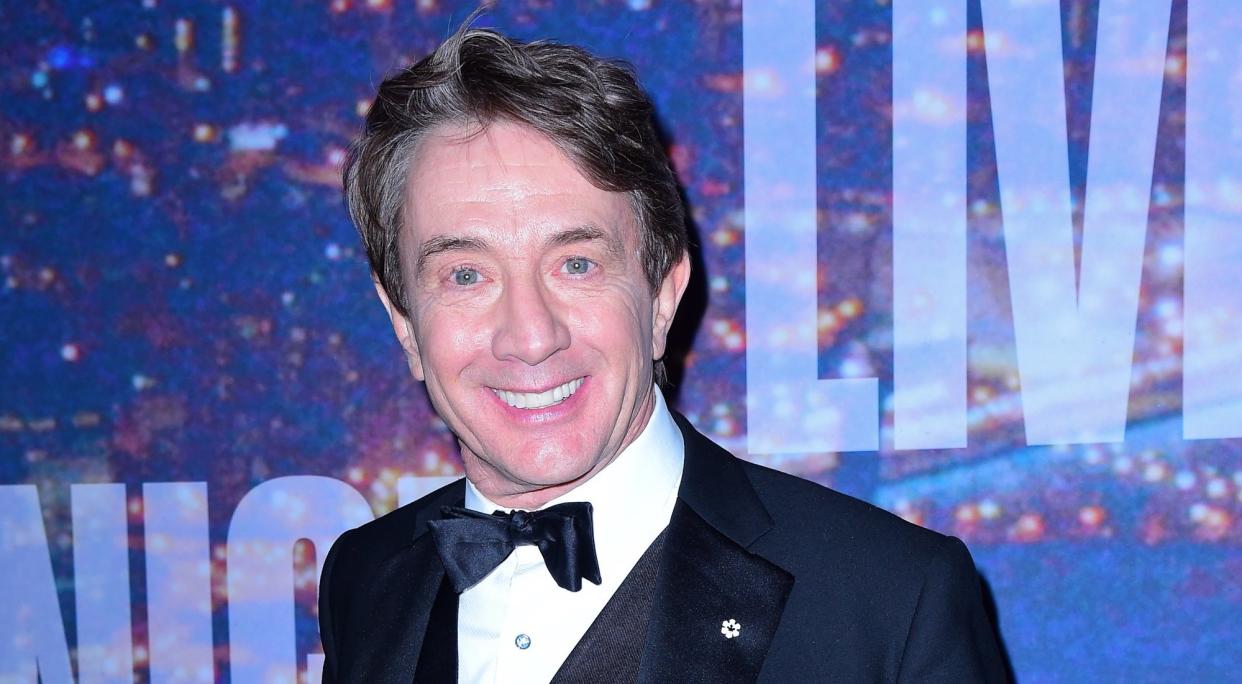
It’s hard to imagine a time when Martin Short wasn’t an American comedy treasure. Back in the early ’80s, though, only Canadian audiences knew him on a first-name basis. Born in Hamilton, Ontario, in 1950, Short rose to prominence in his home and native land during the ’70s via his presence in the Second City comedy troupe as well as on SCTV — Canada’s answer to Saturday Night Live. Those early gigs brought him into contact with such contemporaries as Eugene Levy and Rick Moranis, who later went on to gainful and lucrative employment in the U.S.
And Short had the opportunity to join them when he was invited to make the leap from SCTV to SNL in 1984. Naturally, a decision that momentous wasn’t arrived at easily. “I made a pro and con list about why I should and shouldn’t be on SNL,” the actor tells Yahoo Entertainment, chuckling at the memory. “I still have this piece of paper, and it’s hilarious because both sides are credible!”
In the end, the pros outweighed the cons and Short moved to New York in the fall of ’84, commencing a 35-year run on this side of the border that’s encompassed feature films, TV series, Broadway productions and cartoons. With his latest animated feature, Elliot: The Littlest Reindeer, opening in theaters just in time for Christmas, we revisited some of the most memorable roles in Short’s long career.
Saturday Night Live (1984-1985)
Considering that NBC’s perennial sketch series was created by Toronto-born Lorne Michaels, it’s no surprise that the show has long been a Canadian-to-American pipeline for rising Canuck comedy stars, Dan Aykroyd and Mike Myers among them. Having shot to fame as part of the celebrated SCTV crew, Short was recruited to join SNL during the show’s 10h season, when Michaels was still on his hiatus from Studio 8H. He crossed the border with his signature Second City and SCTV creation: overly excitable man-child Ed Grimley.
The producers had approached me and said, “This is who we’re trying to get,” and then listed Christopher Guest, Harry Shearer and Billy Crystal. I thought, “Well, lots of luck; call me when you get them.” Then they called me and said, “We’ve got them.” So I was like, “I guess I have to do it!” It was a one-year contract; we didn’t have to sign anything longer than we didn’t want to. I asked to quit after my fourth episode because I wasn’t convinced I was right for it. Being Canadian and savvy, my argument was that I hadn’t cashed any checks, so I thought they’d just let me out! They didn’t, but [then-producer] Dick Ebersol said, “If you still want to leave at Christmas, I’ll let you out.” He knew that I’d be able to see the light at the end of the tunnel by then, you know?
What SCTV had going for it was that it was all filmed, so you were able to sit there with a seven-minute piece that didn’t work and figure out, “Oh, I know — it should be four-and-a-half minutes.” You had that option. But you couldn’t get that that kind of fabulous SNL live energy that you could feel through the screen. When I did Ed Grimley at SCTV it could be subtler; there was one skit I did where he couldn’t wait for Christmas, and he’s bouncing around the room. So when I did the first Ed Grimley sketch for SNL, I thought that was a better energy. Instead of making a movie, we were doing a Broadway show.
Three Amigos (1986)
Michaels returned to SNL for Season 11, but Short opted not to stick around. That freed him up to join a period comedy that Michaels was developing with SNL veterans Steve Martin and Chevy Chase about three silent-era movie heroes who are mistaken as actual heroes. Released at Christmastime, Three Amigos wasn’t a smash hit during its initial theatrical run, but attracted lifelong fans via home video and cable TV replays. Not only that, but the premise has served as the template for movies ranging from Galaxy Quest to Tropic Thunder.
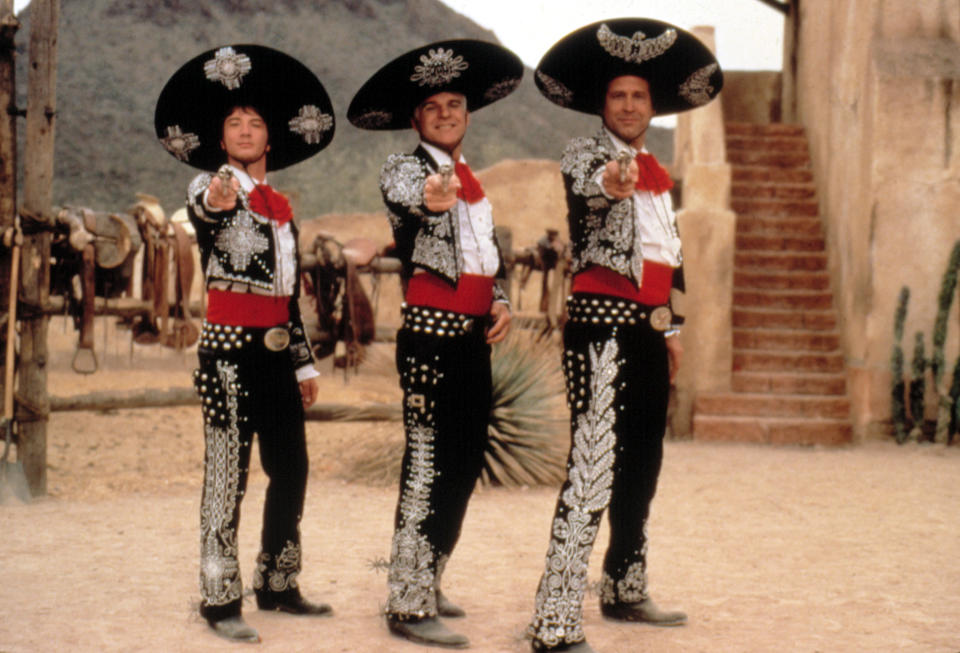
I didn’t know Steve, Chevy or [director] John [Landis] before making the movie, but we would meet and try to bond in advance of filming. The more you became aware of who Steve was as a writer, you realize that he would always be saying, “Guys, look — any better joke, please.” There’s a scene in that movie where I’m with a group of Mexican children talking about Dorothy Gish, and it’s a completely improvised scene. All John had on the shoot list that day was “Marty sits with Mexican children.” We didn’t even know what the topic was so there was a lot of freedom, which was unique. And I thought it was interesting that it was not Lillian Gish — the famous sister — but Dorothy Gish that impressed him.
You’re never aware about how these movies will do, but when you’re in airports, that’s when people come up to you and you start noticing what they’re talking about. And that’s when I became aware that Three Amigos had a shelf life. I mean, Galaxy Quest is Three Amigos! It’s one of those films where the basic premise is to be silly and funny.
Father of the Bride (1991)
Short reunited with Martin for this wildly successful family comedy… and promptly stole the movie right out from under him. As flamboyant wedding planner Franck Eggelhoffer, Short adopts a gonzo Euro-accent that delights audiences and leaves Martin’s put-upon papa hilariously flummoxed.
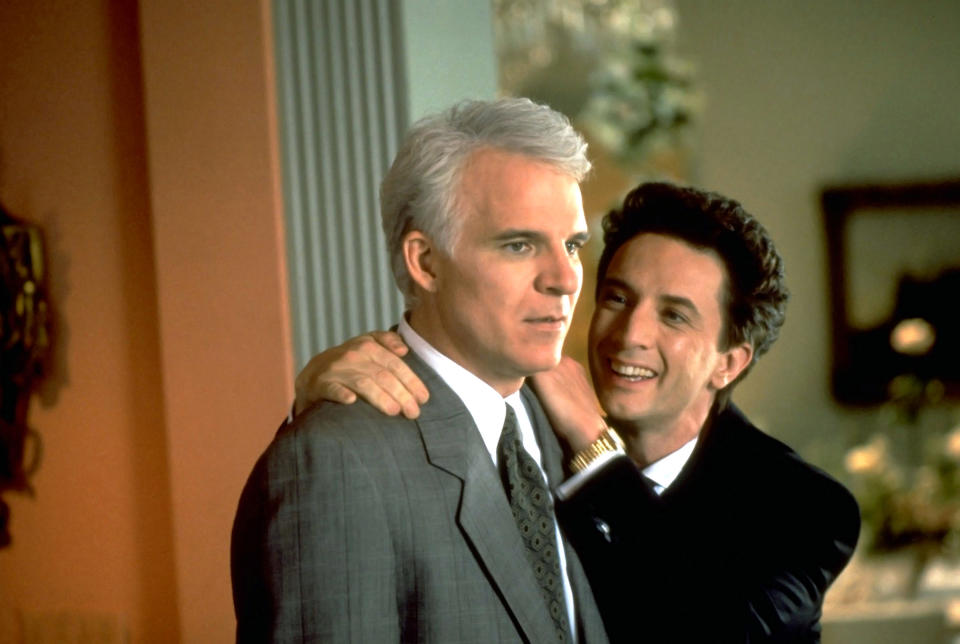
It was the filmmakers’ take that Franck would speak in a very confusing accent. Their core idea was that Steve’s character wouldn’t understand it, but the mother and daughter did, which symbolized Steve’s alienation — he couldn’t even understand a wedding coordinator, let alone what needed to be done. Steve has a great regard for comedy and a great regard for the setup. One of his major heroes in his life is Jack Benny, and Jack Benny would set up a lot of people that were around him. Steve’s agenda in general is to make sure that the whole scene works; his own participation in that scene is surprisingly not that important to him. He just wants the scene to work.
Damages (2010)
During its five-season run, FX’s legal drama gave a number of comic actors a chance to show off their serious side, from Ted Danson to Lily Tomlin. Short had a major role in Season 3 as attorney Leonard Winstone, and he demonstrated that his range as a performer went far beyond funny voices and pratfalls.
You know, there’s a big difference between being a standup comedian talking about dating and being Peter Sellers. It was no surprise to anyone that Peter Sellers could be an effective dramatic actor like in Being There, or a brilliant comedic actor in the Clouseau movies. What’s interesting about the Kessler brothers, who created Damages, is that they appreciate that comedic actors are great actors because they’re asked to do something extra. They’re supposed to be real, but at the same time be funny within that reality. I remember the first scene I shot on Damages was with Glenn Close and Lily Tomlin, and Glenn kept saying, “How shall I do this?” But Lily and I were playing noncomedic types, so she was fine.
Inherent Vice (2014)
Paul Thomas Anderson’s ’70s-era head trip gets even trippier when Short enters the frame as coked-up dentist, Rudy Blatnoyd. In his brief, but instantly memorable appearance, Blatnoyd provides some valuable intel — and plenty of drugs — to the movie’s addled private eye, played by Joaquin Phoenix, an actor famous for his intense commitment to his characters.
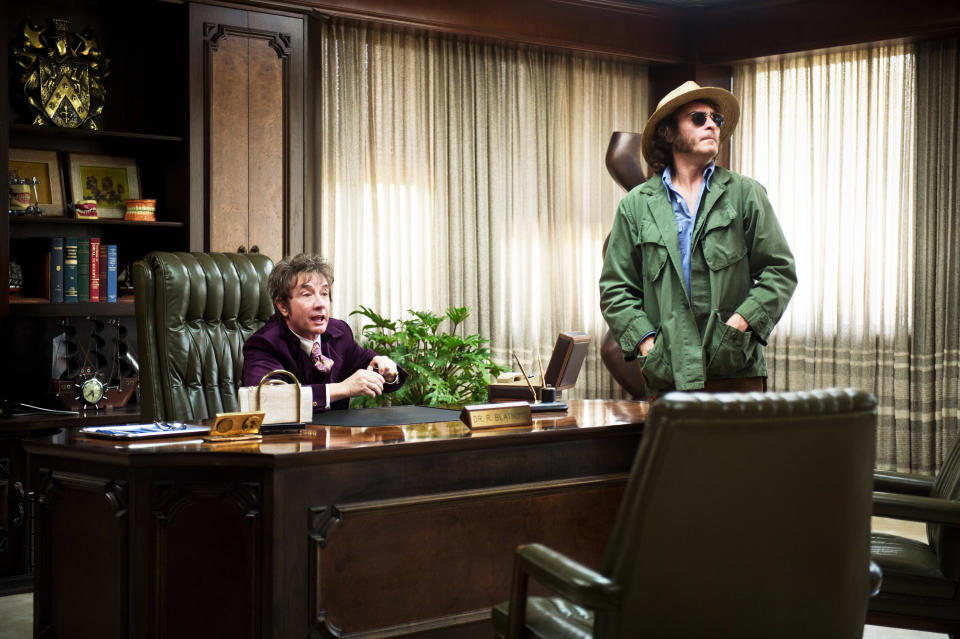
My memory of that film is that I just love working with Paul Thomas Anderson. He works as if he’s still just a film student, so understands that we just keep doing takes. He’d say, “Get out of the car. Go in the car. OK, go in the car, and get back in the car. Marty, you screamed that line before. Scream it again. Same line. No, make it up.” I loved that. It was kind of hip, guerrilla filming. Joaquin was Joaquin; sometimes different roles demand different things, but in that case he seemed very loose and was having fun.
Elliot: The Littlest Reindeer (2018)
When he’s not on camera, Short can often be found in the recording booth providing voices for a plethora of animated characters on the big and small screens. He voices three characters in this Christmas-themed family cartoon, including the movie’s central villain.
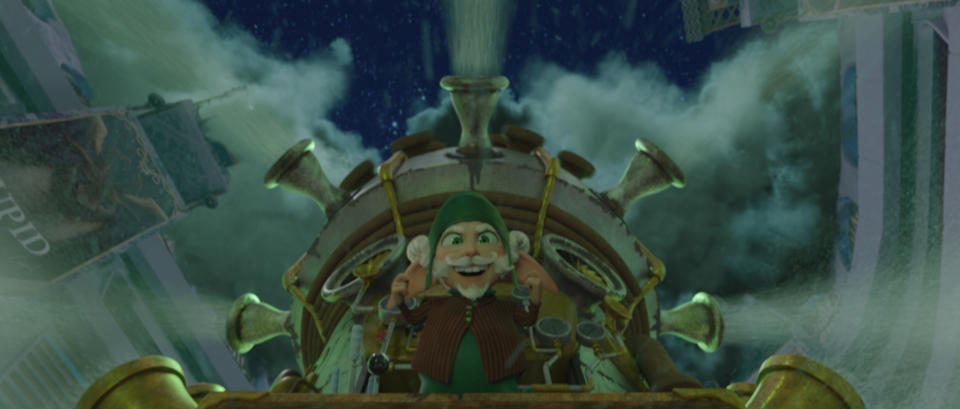
The way voiceover sessions work is that the first day is just a freeform day; you try your character as a Russian, as a Frenchman, as an Englishman, an American or a Canadian, and let them mull it over a bit. Then they come back and say, “We loved it when you were British,” so you say, “That’s the character, I guess!” As the creators, they have a better vision than, say, an actor who shows up on the day. Our job is to give them lots of options so they can ponder what it could be. They often show you images of what your character will be, and that helps tremendously. For example, if it’s a frightened-looking little starfish, it’s fun to give them a big grand deep voice — you know, play against type. And if you’re playing the villain, sometimes it’s more seductive and interesting to play them very sweetly as opposed to gruff. That becomes clichéd and one-note.
Elliot: The Littlest Reindeer is playing in theaters now.
Read more from Yahoo Entertainment:

